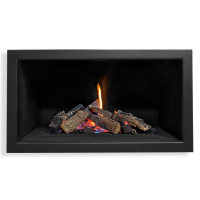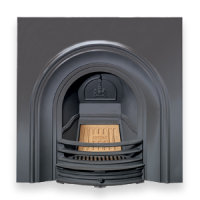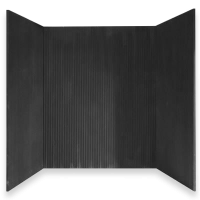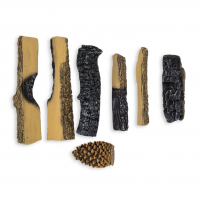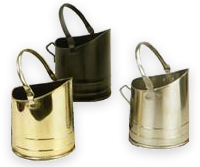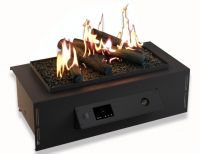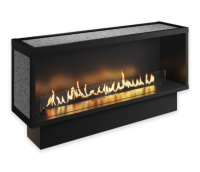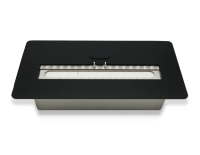Bio-Ethanol Fires
Bio-ethanol differs from ordinary fuel in that it's entirely composed of biological products. For example, the sugar and starch components of plant by-products. Since its combustion gives off clean emissions and it's infinitely renewable, bioethanol fires make sense from both ecological and economic perspectives. You can enjoy a stunning open fire more easily than ever before, even in a high-rise building, terrace or garden!
What is a bioethanol fire?
A bio-ethanol fire is a type of fireplace that burns a clean, liquid fuel called bioethanol to produce a real flame without the need for a chimney, flue, or permanent gas or electric connection. They are a popular alternative to traditional fireplaces due to their ease of installation and modern, minimalist design.
How does a bioethanol fire work?
The operation of a bio-ethanol fire is surprisingly simple and is based on a clean-burning chemical reaction.
Step 1: the fuel
Bioethanol, a renewable, plant-based fuel, powers the fire. It is a type of alcohol, produced by fermenting the sugar and starch components of various crops, such as sugarcane, corn, and wheat. You can easily buy bioethanol fuel from us, too.
Step 2: the burner
The bioethanol fuel is poured into a designated burner, a container often made of stainless steel. This burner acts as the fuel reservoir and contains a mechanism (usually a sliding lid or a ceramic wool wick) to control the flame.
Step 3: the combustion process
Once the fuel is in the burner, you use a long lighter or a long match to ignite it. The bioethanol liquid itself does not burn. Instead, the heat from the flame vaporises the alcohol, and it's the ethanol vapour that combusts in a controlled manner. This is why you will often see a blue flame when the fire is first lit, which then changes to a more natural orange-yellow as the burner heats up and the fuel vaporises more efficiently.
Step 4: the emissions
Because the combustion is very clean, the only byproducts are water vapour and a small amount of carbon dioxide. This means there is no smoke, soot, or ash produced, which is why a chimney or flue is not required. The amount of CO2 released is comparable to what is produced by two lit candles.
Step 5: extinguishing the fire
To extinguish the fire, you use a special tool to close the burner's lid. This cuts off the oxygen supply, and without oxygen, the flame goes out. The burner remains hot, so it is crucial to wait until it has cooled down completely before refuelling.
Types of Bio Fireplace
-
remote control burners
-
fire boxes
-
manual burners
Why Consider Us
We have been in business since 1974, giving us decades of experience in the fireplace industry. Our staff are described as knowledgeable and professional, able to guide customers through the selection and installation process. We offer a one-stop shop experience that goes beyond a fireplace.
-
Free estimates for supply and installation within most London postcodes.
-
Complete installation services by Gas Safe-registered engineers.
-
Bespoke installations to meet individual requirements.
-
Chimney sweeping and testing for maintaining safety (where applicable, i.e., not for biofuel fires, for instance)
-
Servicing and maintenance after installation to ensure the fire remains in top condition.
Bioethanol Fireplace FAQs
Are bio-ethanol fires safe?
Yes, bio-ethanol fires are generally safe when you follow the manufacturer's instructions and exercise common sense. The primary risks are associated with the highly flammable fuel: you must never refuel a hot or lit burner and should always clean up any spills before lighting the fire to prevent uncontrolled flames. It is essential to ensure the fire is placed on a stable surface and at a safe distance from combustible materials like curtains and furniture. Although bio-ethanol fires burn cleanly and do not require a chimney, you should still ventilate the room to prevent a buildup of carbon dioxide, and it is highly recommended to have a carbon monoxide alarm as a final safety measure.
What are the safety regulations?
Bio-ethanol fires are not subject to the same strict building regulations as traditional fireplaces because they are considered flueless, decorative appliances. However, safety is still paramount and is governed by a combination of standards and best practices. The key European safety standard that was onshored, BS EN 16647:2015, provides the main guidelines for the design, construction, and operation of these fireplaces, which reputable UK manufacturers follow. At Real Flames, we only supply bio ethanol fireplaces that meet the standards.
Do bio ethanol fires produce carbon monoxide?
Yes, and similar to that of two candles. Therefore, bio-ethanol fires produce negligible amounts of carbon monoxide, but a carbon monoxide detector is still highly recommended as a safety precaution.
Can I install a TV above a bio-ethanol fire?
Yes. Manufacturers typically recommend a minimum distance of 60cm to 1 metre between the top of the fireplace and the bottom of the TV to prevent heat damage.
Can I use a bio-ethanol fire in an existing fireplace?
Yes, you can often fit a bio-ethanol burner into an existing fireplace opening. This is a popular option for converting a traditional fireplace without the need for a chimney.
What are the clearance requirements?
A standard recommendation is at least 1 metre from soft furnishings, curtains, and other flammable items.
How much does a bio-ethanol fire cost to run?
It's typically between £1 and £2 per hour, depending on the fire's model, flame setting, and the price of the fuel.
How long does a litre of fuel last?
A litre of bio-ethanol fuel generally burns for 2 to 5 hours, depending on the burner size and the flame setting.
Do they give off real heat?
Yes. While often used for ambience, bio-ethanol fires produce real heat. A typical heat output is around 3kW, which is enough to provide a noticeable amount of warmth in a small to medium-sized room.










